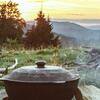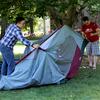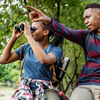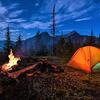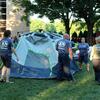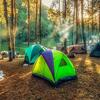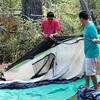The National Wildlife Federation's Great American Campout is a celebration of camping as a way to connect with nature and wildlife. The benefits from outdoor play for mind, body and spirit are well-documented and help to create a lasting connection to nature and wildlife, which promotes happiness and good health.
There's never been a better time to safely and responsibly connect with nature. Pitch a tent or build a fort from the comfort of home. Grab your gear and head for the backyard or an open park. No matter where you are, take some time to enjoy the nature that connects us all!

